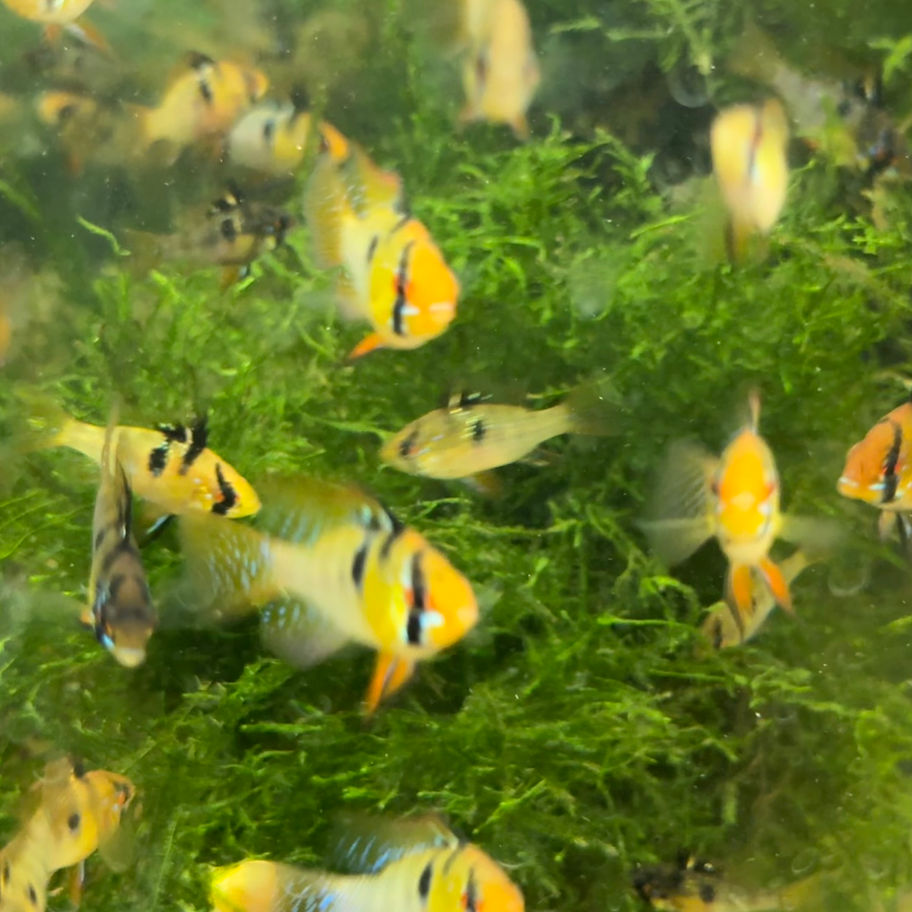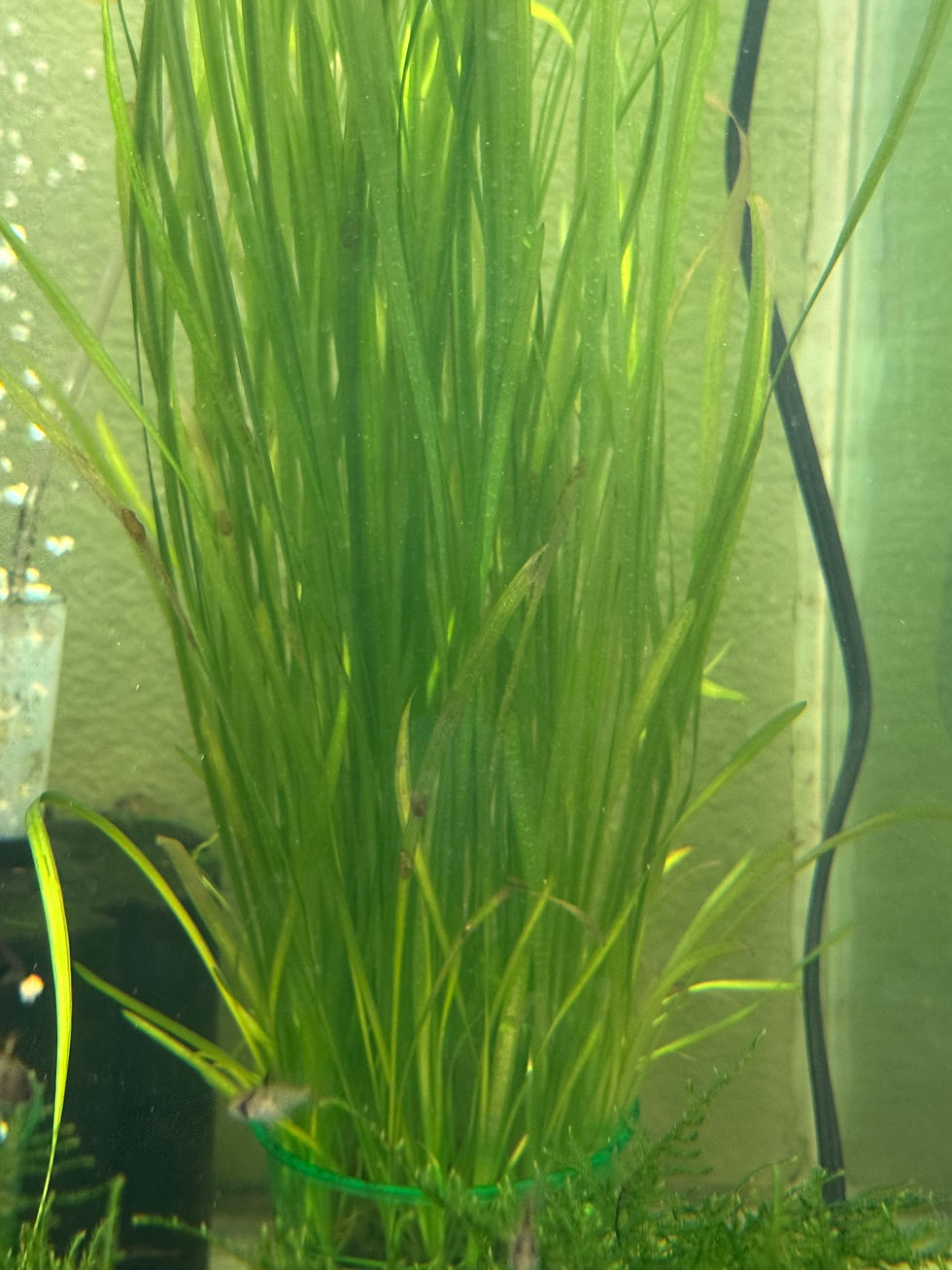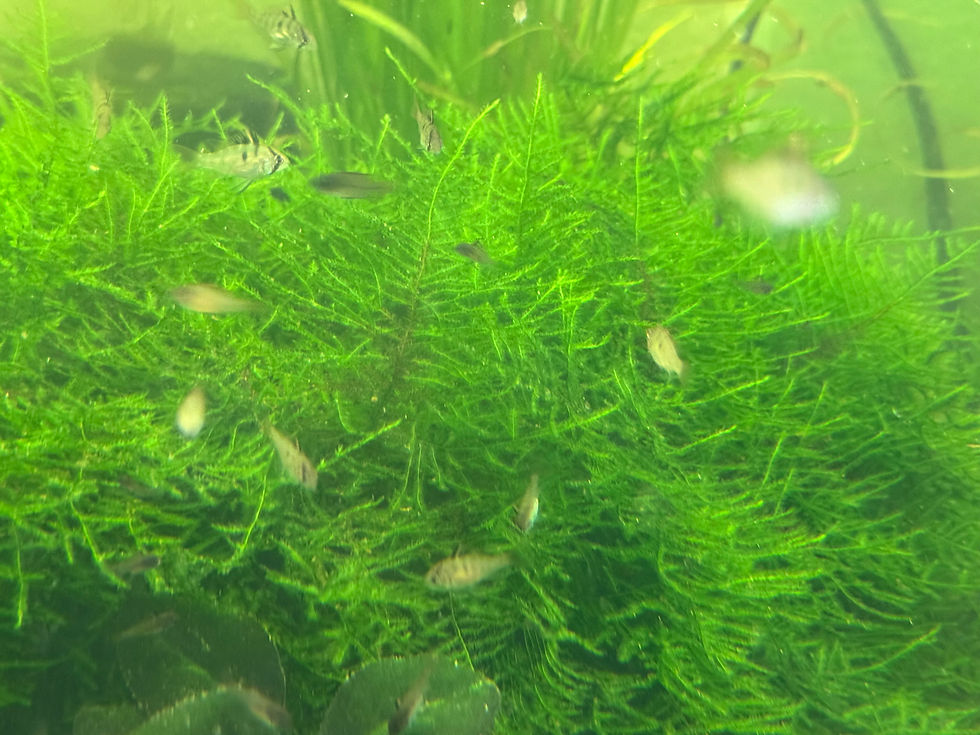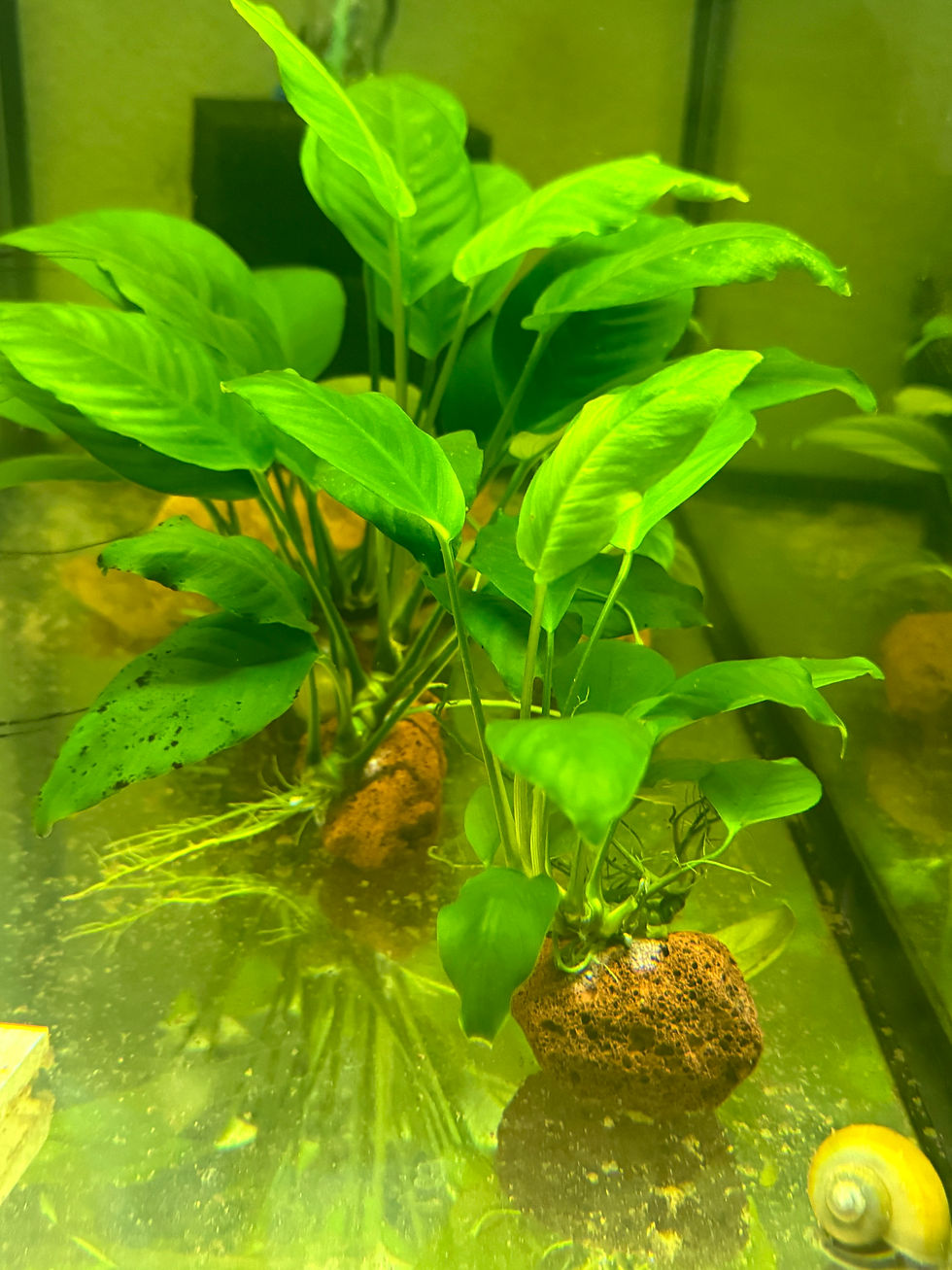top of page
German Blue Ram
Price
$12.00
The German Blue Ram is one of the most beautiful and peaceful dwarf cichlids in the aquarium world. Known for its electric blue iridescence, golden body, and bright red eyes, this species adds a stunning pop of color and calm energy to any tropical tank.
- Scientific Name: Mikrogeophagus ramirezi
- Common Names: German Blue Ram, Blue Ram Cichlid, Butterfly Cichlid
- Size: About 2 to 3 inches (5–7.5 cm)
- Lifespan: 3 to 5 years (with excellent care)
- Behavior: Peaceful, slightly territorial during breeding
- Origin: Native to the Orinoco River Basin (Venezuela and Colombia); selectively bred for color in captivity (thus the “German Blue” name)
These small cichlids are relatively shy compared to larger cichlid species and do very well in community tanks when given the proper environment.
Bonus Tips for Happy German Blue Rams
- Provide lots of hiding spots — driftwood, caves, or dense plants.
- Keep their tank mates peaceful and calm — loud or nippy fish stress them out.
- Soft, warm water is key — if your tap water is hard, you might need RO (reverse osmosis) water.
- Watch their behavior — a healthy Ram will be curious, colorful, and actively exploring.
Quantity
German Blue Ram Care Guide
Tank Requirements
- Tank Size: Minimum 20 gallons for a pair
- Water Temperature: 78°F to 85°F (25.5°C to 29°C)
- pH Level: 6.0–7.5 (prefers slightly acidic)
- Water Hardness: Soft to moderately hard (3–12 dGH)
- Filtration: Strong biological filtration but with a gentle current
- Aquascaping: Sand or fine substrate, with plenty of hiding places (plants, caves, driftwood)
Water Quality
- German Blue Rams are very sensitive to poor water quality!
- Maintain:
- Ammonia and nitrites: 0 ppm
- Nitrates: Below 20 ppm
- Weekly 30–50% water changes are crucial.
Feeding
- Diet: Omnivorous — thrives on a varied, high-protein diet
- Good foods include:
- Daphnia, brine shrimp
- High-quality micro pellets for cichlids
- Occasional vegetable matter like spirulina flakes
- Feed 2–3 small meals a day.
Tankmates
- Best kept with peaceful community fish that enjoy warm, soft water:
- Cardinal tetras
- Rummy nose tetras
- Corydoras catfish (warm-tolerant varieties)
- Hatchetfish
- Plecos (small species like bristlenose)
- Avoid: Fin-nippers, aggressive fish, and large, boisterous tankmates.
Breeding
- Rams form monogamous pairs.
- They lay eggs on flat surfaces (like rocks or broad leaves).
- Both parents tend the eggs and fry.
- Breeding is best in separate tanks with slightly warmer water (around 82°F or 28°C) and very clean conditions.
Common Challenges
- Stress: A major cause of health problems; needs calm environments.
- Short lifespan: Even under the best care, 3–5 years is typical.
- Disease sensitivity: Prone to ich, parasites, and bacterial infections if water parameters fluctuate.
⸻
Bonus Tips for Happy German Blue Rams
- Provide lots of hiding spots — driftwood, caves, or dense plants.
- Keep their tank mates peaceful and calm — loud or nippy fish stress them out.
- Soft, warm water is key — if your tap water is hard, you might need RO (reverse osmosis) water.
- Watch their behavior — a healthy Ram will be curious, colorful, and actively exploring.
You may also like
bottom of page




















